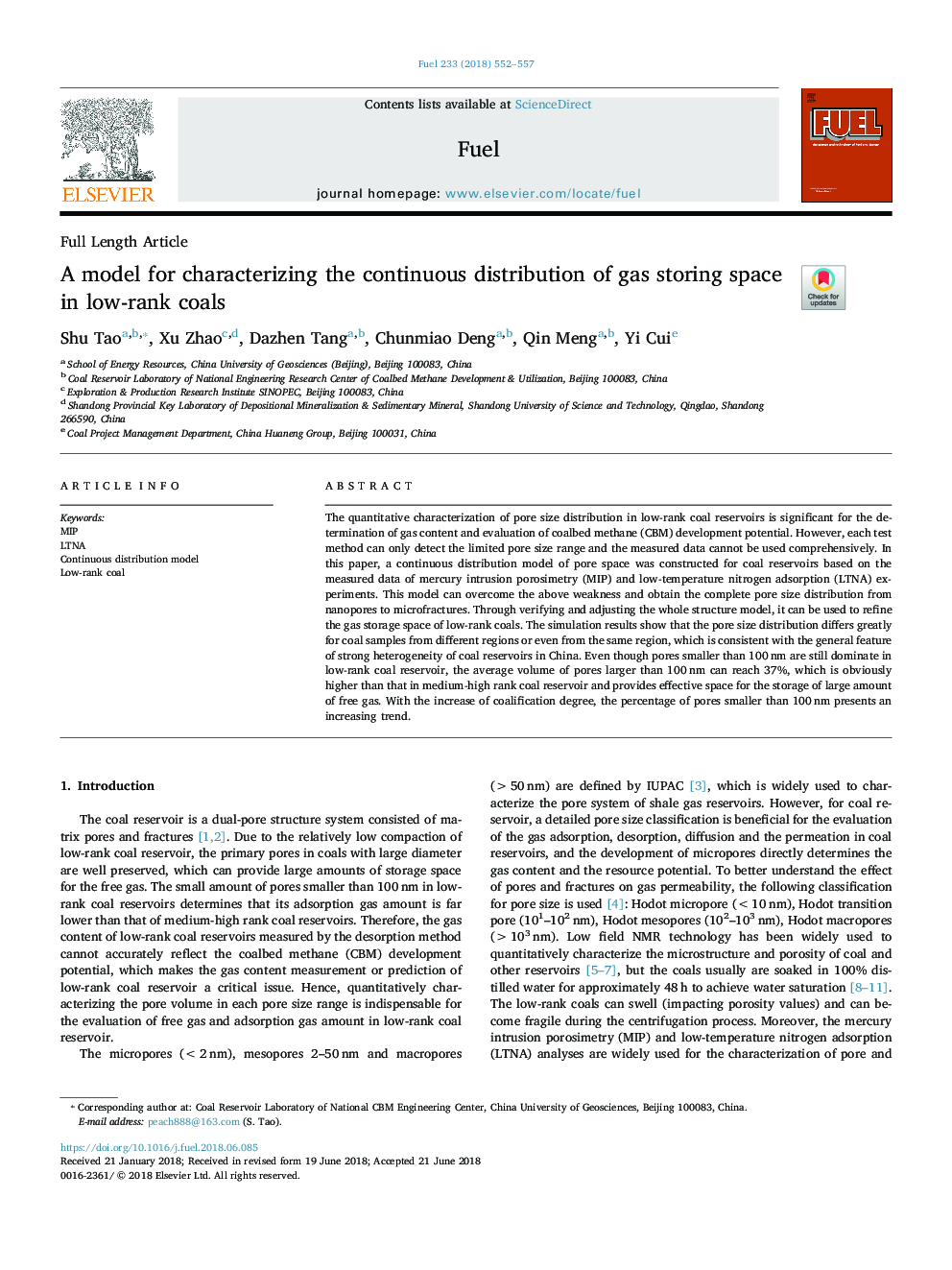| Article ID | Journal | Published Year | Pages | File Type |
|---|---|---|---|---|
| 6630265 | Fuel | 2018 | 6 Pages |
Abstract
The quantitative characterization of pore size distribution in low-rank coal reservoirs is significant for the determination of gas content and evaluation of coalbed methane (CBM) development potential. However, each test method can only detect the limited pore size range and the measured data cannot be used comprehensively. In this paper, a continuous distribution model of pore space was constructed for coal reservoirs based on the measured data of mercury intrusion porosimetry (MIP) and low-temperature nitrogen adsorption (LTNA) experiments. This model can overcome the above weakness and obtain the complete pore size distribution from nanopores to microfractures. Through verifying and adjusting the whole structure model, it can be used to refine the gas storage space of low-rank coals. The simulation results show that the pore size distribution differs greatly for coal samples from different regions or even from the same region, which is consistent with the general feature of strong heterogeneity of coal reservoirs in China. Even though pores smaller than 100â¯nm are still dominate in low-rank coal reservoir, the average volume of pores larger than 100â¯nm can reach 37%, which is obviously higher than that in medium-high rank coal reservoir and provides effective space for the storage of large amount of free gas. With the increase of coalification degree, the percentage of pores smaller than 100â¯nm presents an increasing trend.
Keywords
Related Topics
Physical Sciences and Engineering
Chemical Engineering
Chemical Engineering (General)
Authors
Shu Tao, Xu Zhao, Dazhen Tang, Chunmiao Deng, Qin Meng, Yi Cui,
